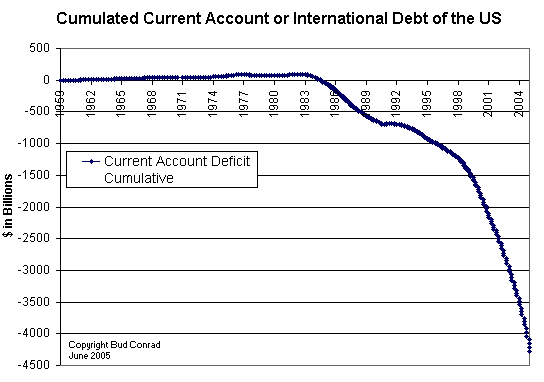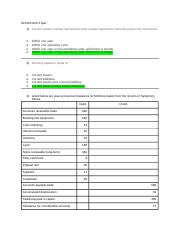Content

QuickBooks accounting software , you can access important insights, like your allowance for doubtful accounts. With this data at the ready, you can more efficiently plan for your business’ future, keep track of paid and unpaid customer invoices, and even automate friendly payment reminders when needed, all in one place. QuickBooks researchalso shows nearly half (44%) of small business owners who experience cash flow issues say the problems were a surprise. Including an allowance for doubtful accounts in your accounting can help you plan ahead and avoid cash flow problems when payments don’t come in as expected. Recording the above journal entry will offset your current accounts receivable balance by $3,000.
- BDE is reported on financial statements using the direct write-off method or the allowance method.
- The companies that qualify for this exemption, however, are typically small and not major participants in the credit market.
- Because of the matching principle of accounting, revenues and expenses should be recorded in the period in which they are incurred.
- Allowance for doubtful accounts is a dollar amount companies deduct from their receivables to account for unpaid invoices or debt.
- Your Guide to Running a Business The tools and resources you need to run your business successfully.
- Here are a few examples of how to calculate your allowance for doubtful accounts.
- Like accounts receivable, short-term notes receivable are reported at their cash realizable value.
The percent of receivables is a more accurate measure because it uses the actual receivables and the amount of time they have currently been outstanding. Those receivables that have been outstanding for a longer time are less likely to be collected. It can also be thought of as a risk assessment tool that gives finance teams a better idea of how future clients may perform with respect to paying their debts. Invoices that are days past due might be assigned 15% uncollectible, and if you have $7.500 outstanding in this grouping, then $1,125 would be reserved for your allowance of doubtful accounts. In this method you would group your aging receivables and determine the percentage for each group that is likely to become uncollectible.
What type of account is the allowance for doubtful accounts?
In this context, the contra asset would be deducted from your accounts receivable assets and would be considered a write-off. It’s important to note that an allowance for doubtful accounts is simply an informed guess and your customers’ payment behaviors may not exactly align. This could mean more customers fail to pay and you wind up with more uncollectible accounts, or you might have overestimated your allowance for doubtful accounts.
- The recovery of an uncollectible account when the allowance method is used does not affect the income statement.
- Doubtful debt is money you predict will turn into bad debt, but there’s still a chance you will receive the money.
- Allowance for Doubtful Accounts has a credit balance and is credited when increased because it is a contra to the asset account Accounts Receivable, which has a debit balance and is debited when increased.
- Learn financial statement modeling, DCF, M&A, LBO, Comps and Excel shortcuts.
- A loan provider or creditor outsources its debt-collection function to such a third party to reduce bad debts.
- Your Guide to Growing a Business The tools and resources you need to take your business to the next level.
- It gives them the required time to collect money & make the payment.
With the percentage of sales method, you will estimate the number of invoices you are unlikely to collect using historical default data. Multiplying the default rate with the total AR will give you an estimate of bad debt expense. The allowance for doubtful accounts (or the “bad debt” reserve) appears on the balance sheet to anticipate credit sales where the customer cannot fulfill their payment obligations. When customers don’t pay you, your bad debts expenses account increases. A bad debt is debt that you have officially written off as uncollectible.
Estimating the Amount of Allowance for Doubtful Accounts
If it does not issue credit sales, requires collateral, or only uses the highest credit customers, the company may not need to estimate uncollectability. Under the percentage of receivables basis, management establishes a percentage relationship between the amount of receivables and expected losses from uncollectible accounts. There are two approaches to measuring and recognizing the uncollectible amounts. The entity should first use historical data along with information about the current status of the debtors (i.e. customers) to evaluate their ability to pay. For example, if a customer has gone bankrupt, we might determine that there is a very low possibility that they will ever be able to pay what they owe. Once the entity has determined potential uncollectible amounts and reviewed historical trends, then there are two broad types of approaches available to recognize this amount in the entity’s books.

A doubtful account or doubtful debt is an account receivable that might become a bad debt at some point in the future. If customers purchase on credit, establishing an allowance of doubtful accounts is an important tool for your balance sheet and income statement. When the allowance account is used, the company is anticipating that some accounts will be uncollectible in advance of knowing the specific account. As a result the bad debts expense is more closely matched to the sale.
Markup Percentage Calculation
On the balance sheet, the 14k is listed in assets as a deduction, directly below the accounts receivable figure. At end of the year, that 14k figure stays, and new allowances are added. Peter’s Pool Company, based in Tampa, which type of account is an allowance for doubtful accounts? Florida, has estimated the balance allowance for doubtful accounts to be 14k. For the purposes of this example, let’s assume the 14k is 100% accurate and that none of that amount gets collected from the company’s clients.
Is the allowance for doubtful accounts a debit or credit?
The bad debt expense is entered as a debit to increase the expense, whereas the allowance for doubtful accounts is a credit to increase the contra-asset balance.
Let us take an example where a company has a debit balance of account receivables on its balance sheet to an amount of $500,000. The business expects that not all customers will be able to pay 100% of the amount and estimates that $100,000 will not be converted into cash. Thus the allowance for doubtful accounts for the period ending starting that month will be zero in the beginning.
